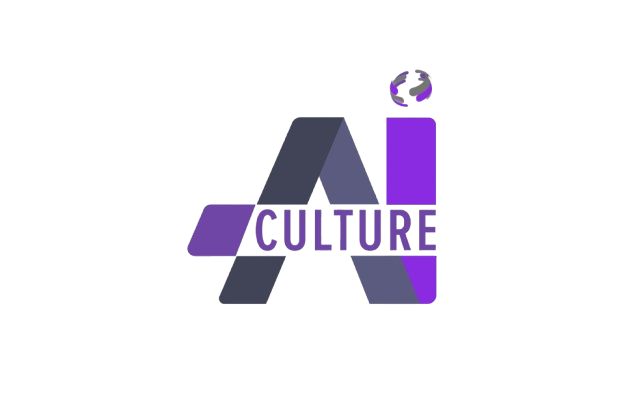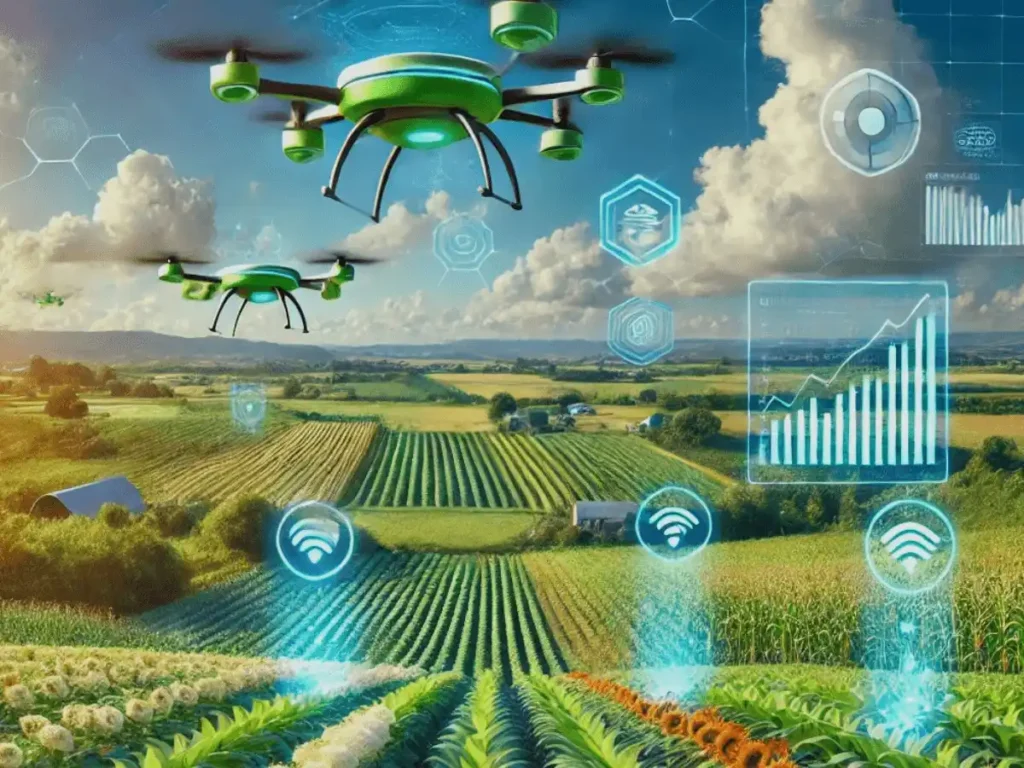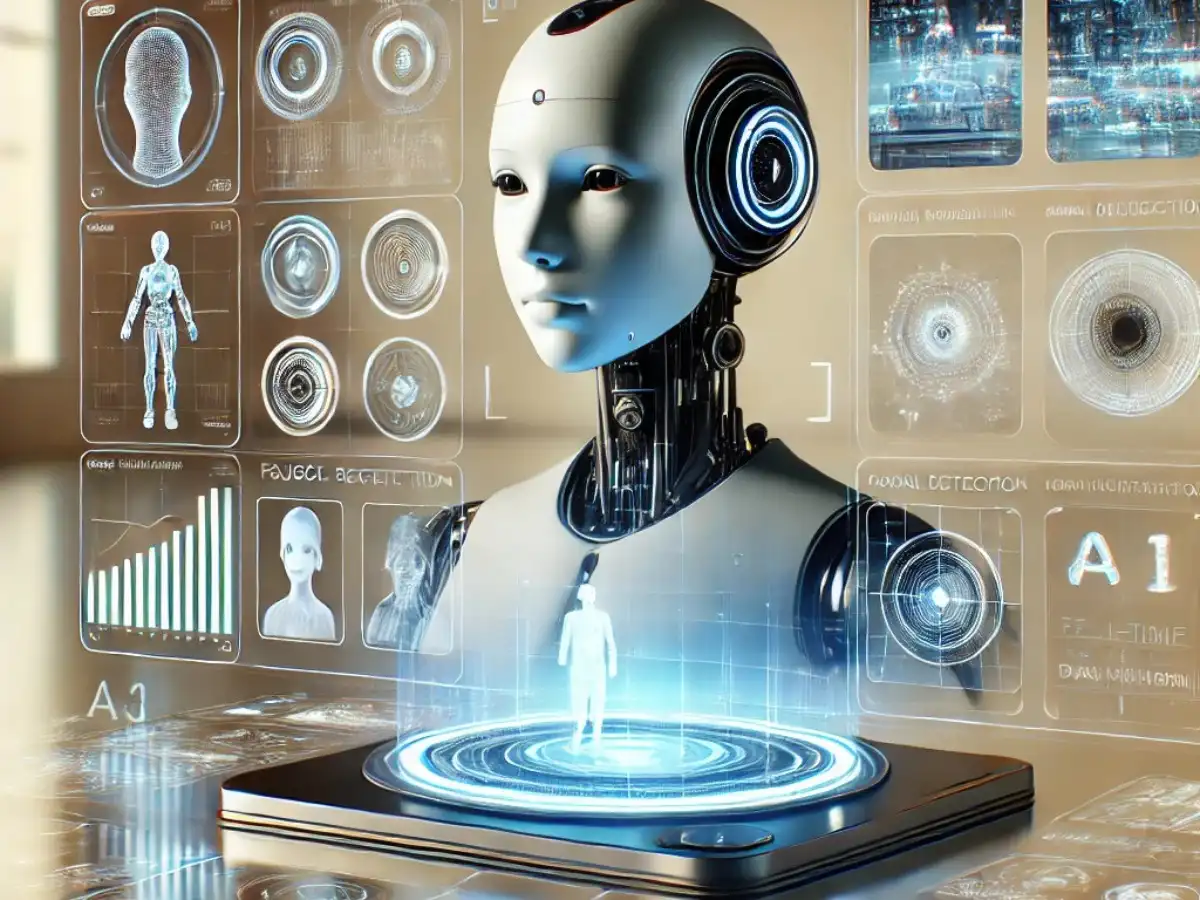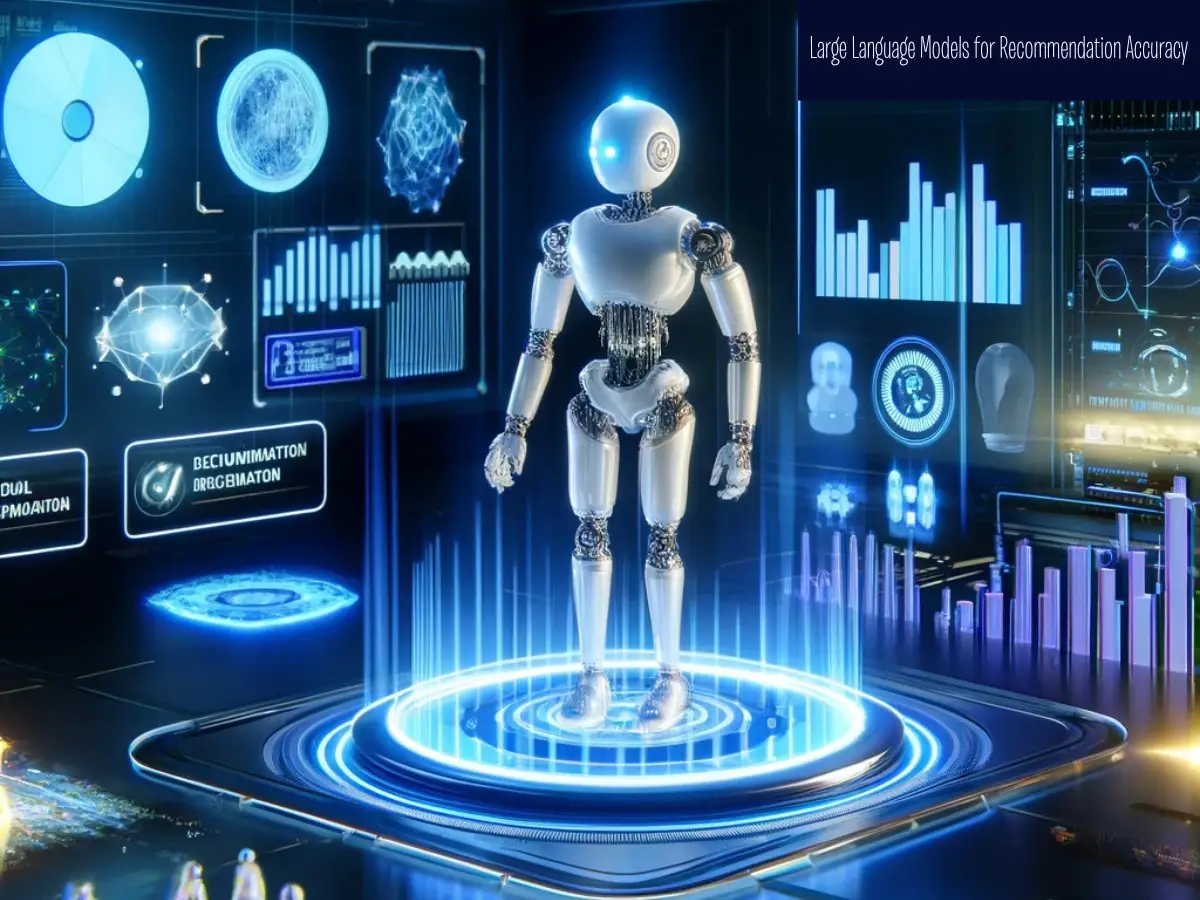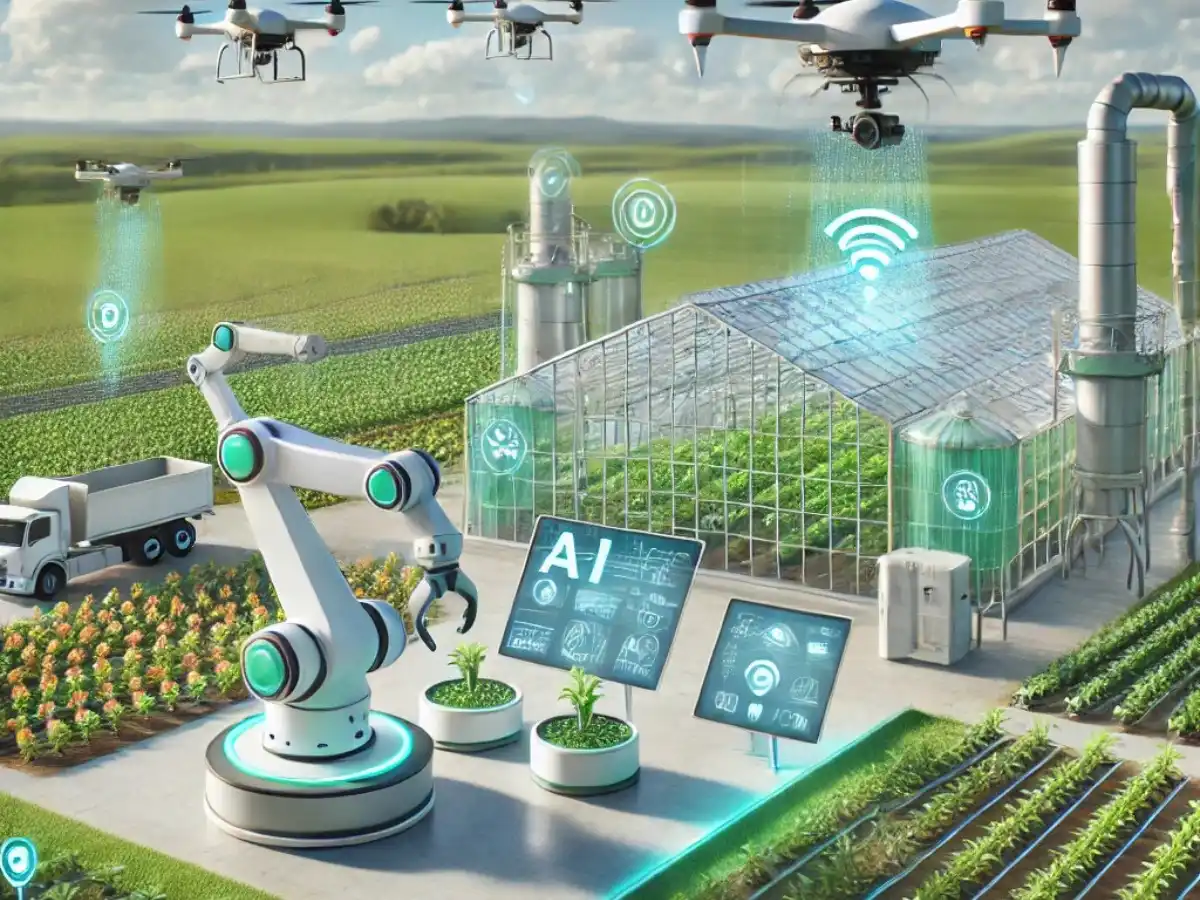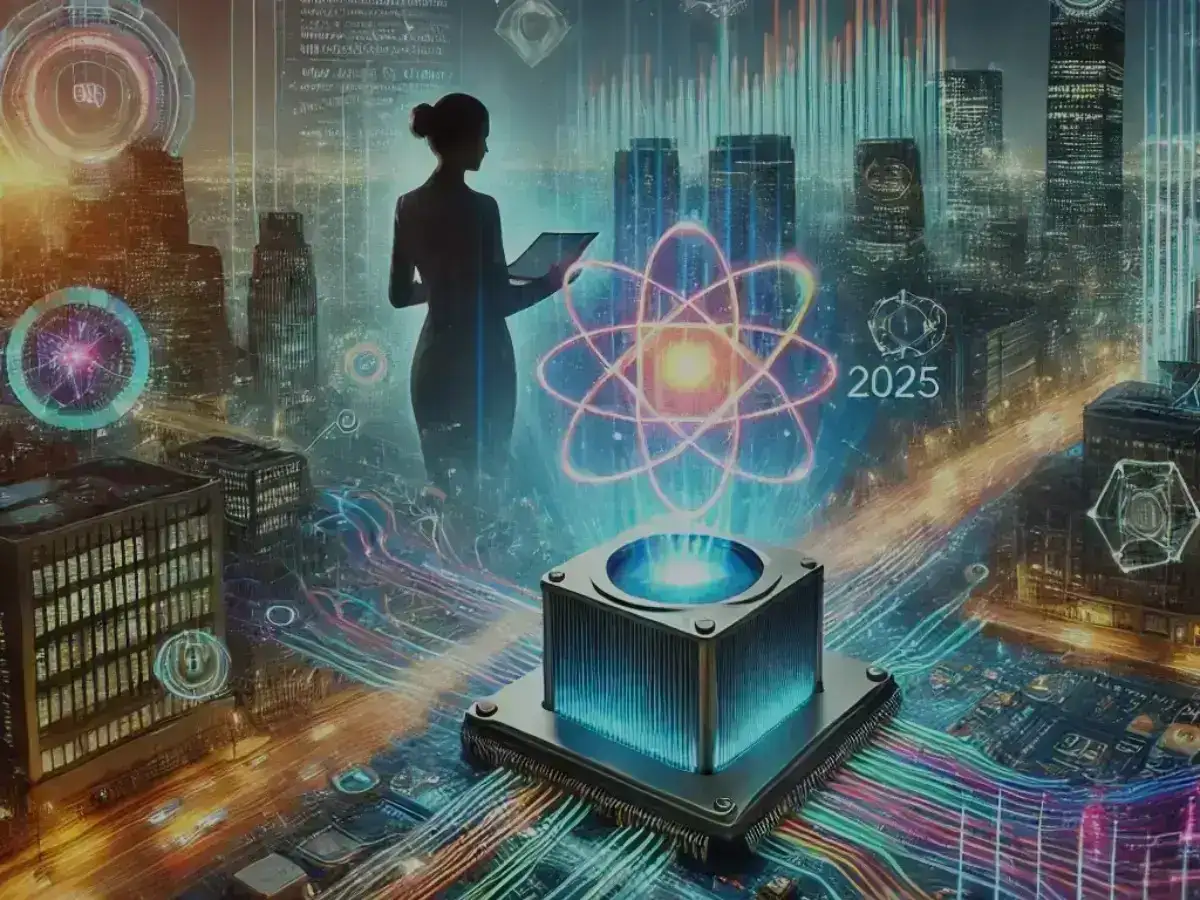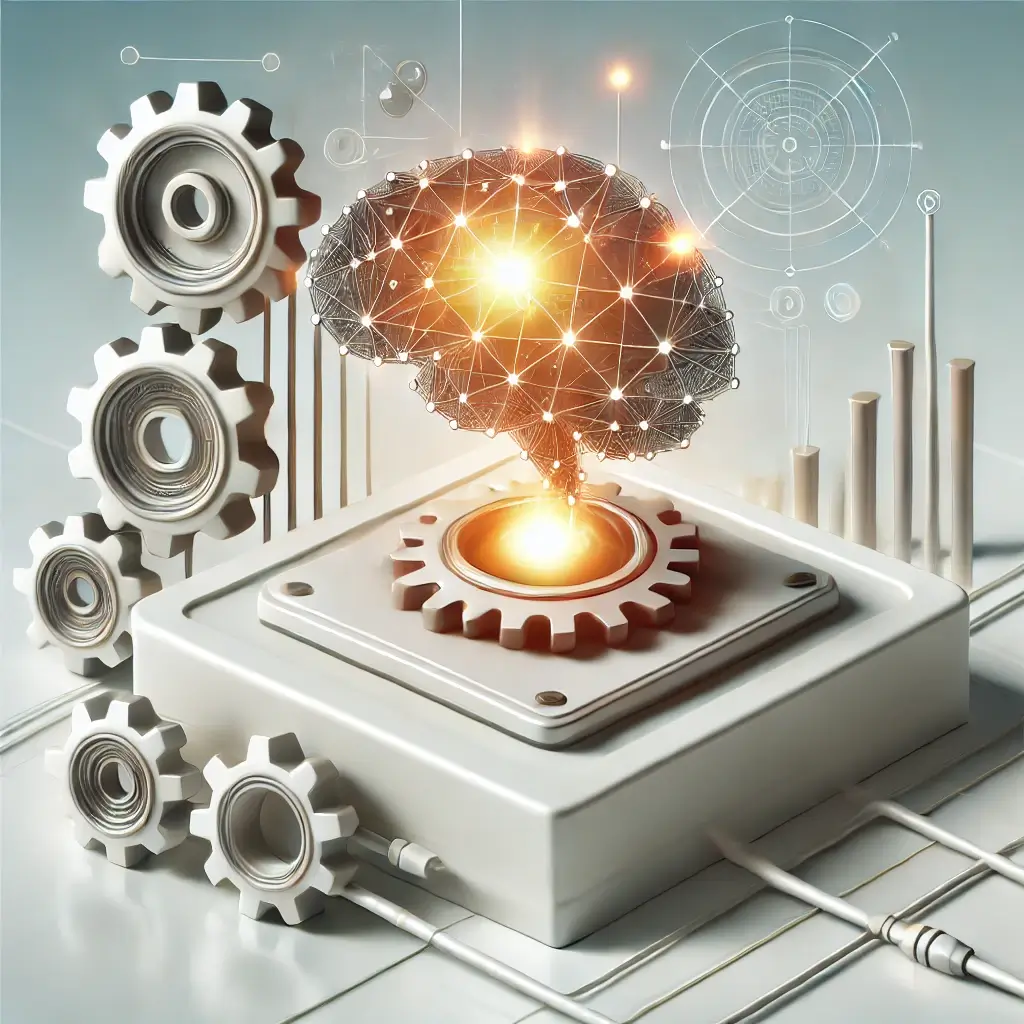With the global population expected to hit 8.6 billion in 2030, 9.8 billion in 2050, there’s a lot of pressure on agriculture to step up its game in crop production and boost those yields. To tackle the upcoming food shortages, there are two main ideas on the table: one is to expand land use and go for large-scale farming, while the other is to embrace innovative practices and use technology to boost productivity on the farmland we already have. Now a days we are also seeing how is AI in agriculture shaping the future?
There are quite a few challenges that farmers face these days, like limited land, not enough workers, climate change, environmental concerns, and soil that’s losing its nutrients. Because of all this, the world of agriculture is changing and exploring some pretty innovative paths. Farming has really evolved from the days of hand plows and horse-drawn equipment.
Every season rolls out fresh technologies aimed at boosting efficiency and making the most of the harvest. But you know, both individual farmers and big agribusinesses often overlook the chances that artificial intelligence in agriculture can bring to their farming practices.
How Is AI In Agriculture Shaping The Future: Benefits
It may have appeared peculiar to use the terms AI and agriculture in the same sentence until recently. Agriculture has been the foundation of human civilization for millennia, supplying sustenance and contributing to economic development, whereas even the most primitive AI only emerged several decades ago. Nevertheless, agriculture is not an exception to the trend of introducing innovative ideas in all sectors.
The world has experienced significant progress in agricultural technology in recent years, which has transformed farming practices.
As the sustainability of our agricultural system is jeopardized by global challenges such as climate change, population growth, and resource scarcity, these innovations are becoming more critical.
The incorporation of AI addresses numerous obstacles and mitigates numerous drawbacks of conventional cultivation.
Data-Based Decisions
The contemporary landscape is fundamentally centered on data. Organizations in the agricultural sector utilize data to gain detailed insights into various aspects of the farming process, including the analysis of individual acres of land, the monitoring of the entire produce supply chain, and the evaluation of yield generation processes.
AI-driven predictive analytics is increasingly being integrated into agribusinesses. Farmers can collect and process data more efficiently using AI. AI can analyze market demand, forecast prices, and identify optimal times for sowing and harvesting.
Artificial intelligence in agriculture facilitates the assessment of soil health, the monitoring of weather conditions, and the recommendation of fertilizer and pesticide applications. Farm management software enhances production and profitability, allowing farmers to make informed decisions throughout the crop cultivation process.
Cost Savings
Farmers are always looking to increase farm productivity. Precision farming, when paired with AI, can help farmers produce more crops using less resources. AI in farming maximizes yields while lowering costs by combining the best data management techniques, variable rate technology, and soil management techniques.
Farmers can determine whether regions require pesticide treatment, fertilization, or irrigation by using real-time crop insights from AI applications in agriculture. In addition to increasing food output, innovative agricultural techniques like vertical agriculture can use fewer resources. leading to significant cost savings, improved harvest quality, increased earnings, and a decrease in the usage of pesticides.
Automation Impact
Labor shortages have long existed since agricultural work is difficult. Fortunately, automation offers an alternative to hiring additional staff. Agricultural tasks that required superhuman sweat and draft animal labor were reduced to a few hours of work by mechanization, but a new wave of digital technology is once again transforming the industry.
Examples include IoT-powered agricultural drones, driverless tractors, smart irrigation, fertilization or fertigation systems, smart spraying, vertical farming software, and AI-based greenhouse robots for harvesting. AI-driven tools are significantly more accurate and efficient than any human farm worker.
Applications of Artificial Intelligence in Agriculture
The Artificial Intelligence in Agriculture Market size is projected to grow from USD 1.7 billion in 2023 to USD 4.7 billion by 2028. It is growing at a Compound Annual Growth Rate (CAGR) of 23.1% from 2023 to 2028 (MARKETSANDMARKETS).
An automated farming system can make many things easier by enhancing technologies that are already in use. AI has the ability to gather and analyze large amounts of data, as well as identify and execute the most effective actions. The following are examples of typical AI applications in farming:
Automated irrigation systems
AI algorithms help with managing crops on their own. So, when you pair IoT sensors that keep an eye on soil moisture and weather conditions with some smart algorithms, they can figure out right on the spot how much water the crops need. A system for autonomous crop irrigation is created to save water and support sustainable farming and agriculture practices. AI in smart greenhouses helps plants grow better by automatically tweaking the temperature, humidity, and light based on real-time data.
Detecting Leaks or Issues in Irrigation System
AI is super important for spotting leaks in irrigation systems. Algorithms can spot patterns and anomalies in data that might suggest potential leaks. So, machine learning models can actually be trained to spot certain signs of leaks, like shifts in water flow or pressure changes. Keeping an eye on things in real-time helps catch issues early, which means less water waste and a lower chance of harming crops.
AI takes into account weather data and crop water needs to spot places where water usage might be too high. AI technology helps farmers save resources by automating leak detection and sending out alerts, making water use more efficient.
Keeping an Eye on Crops & Soil
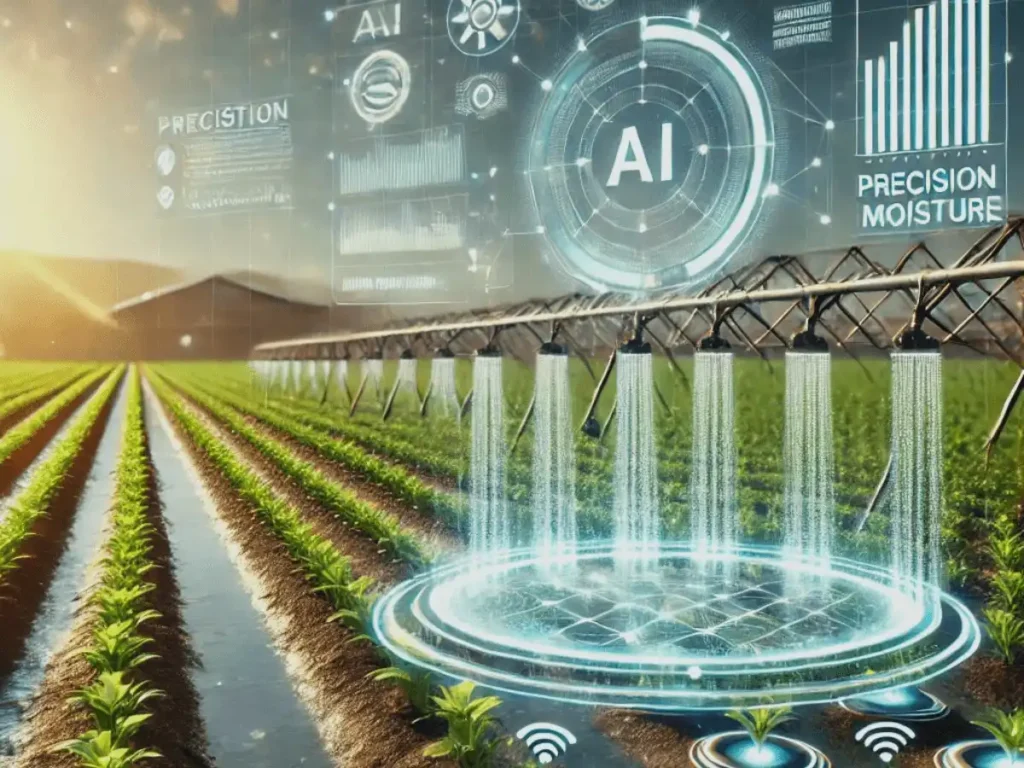
If the nutrients in the soil aren’t quite right, it can really impact how healthy and well crops grow. Figuring out these nutrients and seeing how they impact crop yield with AI helps farmers make the right adjustments effortlessly.
You know, human observation can only go so far when it comes to accuracy. That’s where computer vision models come in handy. They can keep an eye on soil conditions and collect the precise data we need to tackle crop diseases effectively.
This plant science data helps us figure out how healthy the crops are, predict their yields, and spot any specific problems that might come up. Plants kick off AI systems using sensors that pick up on their growth conditions, which then set off automated changes to their environment.
Keeping an Eye on Livestock
It might look like spotting health issues in livestock is simpler than with crops, but honestly, it’s quite tricky. It’s great that AI for farming can lend a hand with this. So, there’s this company named CattleEye that’s come up with a cool solution. They use drones and cameras, along with computer vision, to keep an eye on cattle health from a distance. It picks up on unusual cattle behavior and spots things like birthing activities.
A company named CattleEye uses AI and ML to figure out how diet and environmental factors affect livestock, offering some really useful insights. Farmers can use this knowledge to boost the well-being of their cattle, which in turn can lead to more milk production.
Smart Pesticide and Weedicide Use
These days, farmers really get that there’s a great opportunity to make pesticide use even better. So, it turns out that both manual and automated application processes have some pretty significant drawbacks. Applying pesticides by hand can really help you focus on the exact spots you need, but it can also be a bit slow and challenging. Automated pesticide spraying is faster and requires less work, but it can sometimes miss the mark, which might cause environmental issues.
AI-powered drones combine the best features of each method and steer clear of the downsides. Drones are equipped with computer vision technology that helps them figure out how much pesticide to spray in different areas. This technology is still pretty new, but it’s getting more accurate really quickly.
Spotting Diseases and Pests
In addition to checking out soil quality and how crops are growing, computer vision can also spot pests or diseases that might be lurking around. So, this is all about using AI in agriculture to take a look at images and spot things like mold, rot, insects, or any other issues that might harm crops. When combined with alert systems, this allows farmers to quickly take action to get rid of pests or isolate crops, helping to stop the spread of disease.
AI technology in agriculture is being used to spot apple black rot with more than 90% accuracy. It can also spot insects like flies, bees, moths, and more, with the same level of accuracy. So, researchers had to start by gathering images of these insects to get enough data for training the algorithm.
Sorting Harvested Produce
AI can actually help out in ways beyond just spotting potential problems with crops while they’re still growing. It also plays a part after the produce is harvested. Usually, sorting is done by hand, but AI can sort produce with greater accuracy.
Computer vision is great at spotting pests and diseases in harvested crops. Plus, it can evaluate produce by looking at its shape, size, and color. This helps farmers sort their produce into different categories quickly like selling to various customers at different prices.
On the other hand, traditional manual sorting methods can really be a lot of work and take a lot of time.
Surveillance
Keeping things secure is a big deal when it comes to managing a farm. Farms often get hit by burglars since it’s tough for farmers to keep an eye on their fields all the time. Animals can be quite a hassle, right? I mean, you’ve got foxes sneaking into the chicken coop, and then there’s the issue of a farmer’s own livestock causing trouble with crops or equipment. When you mix video surveillance systems with computer vision and machine learning, they can quickly spot security breaches. Some systems can actually tell the difference between employees and unauthorized visitors.
Weeding & Harvesting Automatically
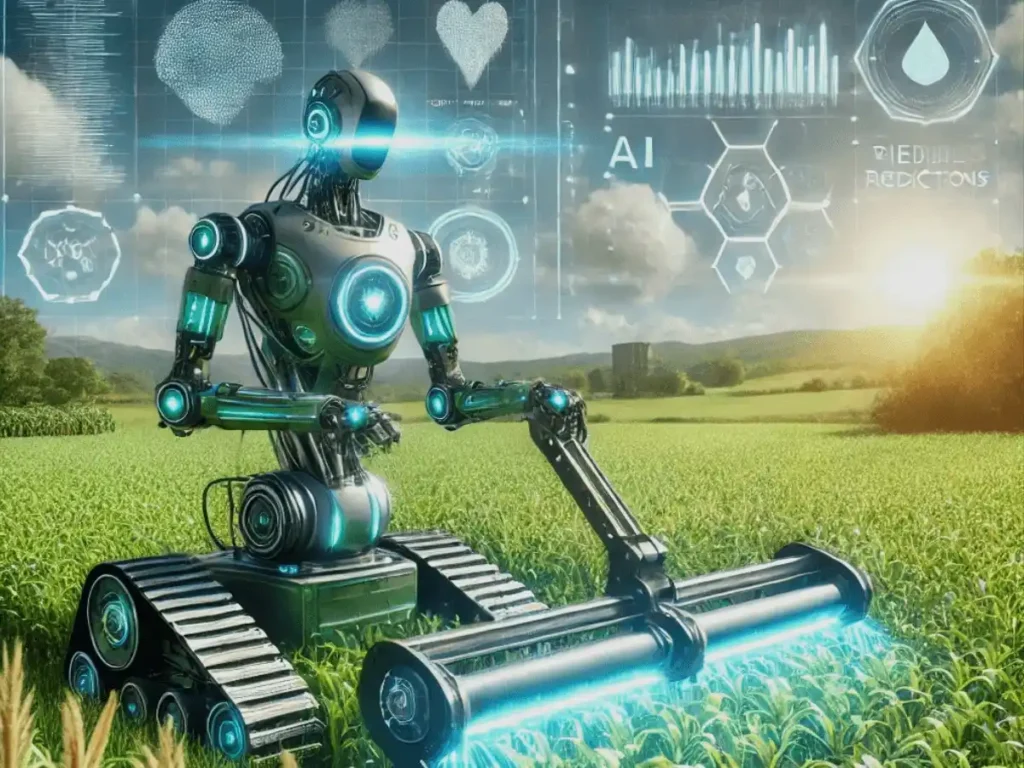
You know, just like computer vision helps spot pests and diseases, it can also be really handy for identifying weeds and invasive plant species. So, when you mix machine learning with computer vision, it can take a look at the size, shape, and color of leaves to tell the difference between weeds and crops. You can use these solutions to program robots for tasks like automatic weeding in robotic process automation (RPA). Actually, that kind of robot has already been put to good use. With these technologies becoming easier to access, we might see smart bots taking over the tasks of weeding and harvesting crops completely.
Yield Mapping & Predictive Analytics
Yield mapping takes advantage of machine learning algorithms to look at big datasets as they come in, all in real time. This helps farmers get a grip on the patterns and traits of their crops, making it easier for them to plan ahead. Farmers can use a mix of techniques like 3D mapping, along with data from sensors and drones, to get a good idea of soil yields for specific crops. We gather data from various drone flights, which allows us to perform more accurate analyses using algorithms.
These methods help predict future yields for specific crops, making it easier for farmers to decide when and where to plant seeds and how to best use their resources for a good return on investment.
Agricultural AI optimization
How is AI in agriculture shaping the future? AI in agriculture has many benefits, but it needs huge data, sensors, and software to work. Other technologies require AI too. Data in huge data is relatively useless. How it’s handled and executed matters.
1. Big Data Informs Decision Making
AI and big data analytics give farmers real-time, accurate recommendations, increasing productivity and lowering expenses.
2. IoT Devices for Data Collection & Analysis
IoT sensors, AI drones, GIS and other technologies provide real-time monitoring, measurement, and storage of training data on various variables. These technologies and AI help farmers get correct information rapidly.
3. Intelligent Automation & Robotics
AI, autonomous tractors and IoT alleviate manpower shortages. Already utilized for manual activities like product picking, agricultural robots are crucial. Farm work robots are better because they can work longer, are more precise, and are less error-prone.
What is the future of AI in Agriculture?
How is AI in agriculture shaping the future? Here is how AI is shaping the future of agriculture, broken down by key applications:
AI Application | Future Potential | Explanation |
Crop Monitoring and Yield Prediction | 85% | AI-powered drones and satellite imagery analyze crop health and predict yields, helping farmers make data-driven decisions and optimize harvest timings. |
Precision Farming | 90% | AI algorithms provide real-time insights into soil conditions, crop needs, and weather, enabling farmers to apply resources like water and fertilizers precisely. |
Pest and Disease Control | 80% | AI models identify pest infestations or diseases early through image recognition and data analysis, reducing crop loss and pesticide misuse. |
Smart Irrigation Systems | 75% | AI analyzes weather forecasts and soil moisture to optimize irrigation schedules, saving water and improving crop yields. |
Soil Health Monitoring | 70% | AI-based sensors assess soil quality and nutrient levels, guiding farmers on how to maintain or improve soil fertility effectively. |
Supply Chain Optimization | 85% | AI streamlines logistics, forecasts demand, and reduces food waste by optimizing supply chains from farm to consumer. |
Livestock Monitoring | 65% | AI-enabled wearable devices track animal health, behavior, and productivity, allowing better herd management. |
Agricultural Robotics | 95% | Robots powered by AI automate tasks like planting, weeding, and harvesting, significantly reducing labor costs and increasing efficiency. |
Weather Prediction and Analysis | 80% | AI analyzes historical and real-time data for precise weather predictions, helping farmers prepare for adverse conditions and plan activities. |
Challenges of AI in Agriculture
AI is often thought to be exclusively relevant to digital chores, not farming. Lack of AI tool knowledge frequently leads to this assumption. AI adoption in agriculture is slow because most individuals, especially non-technical ones, don’t grasp how AI in agricultural biotechnology works. Agriculture has evolved over time, but many farmers prefer old ways. Most farmers have not worked on AI projects.
1. High Upfront Costs
AI solutions can be cost-effective in the medium-to-long term, but the initial investment is high. Many farms and agribusinesses are struggling financially, making AI adoption difficult, especially for small-scale farmers and those in developing countries. AI farms may get cheaper as technology advances. Businesses might also seek government grants or private investment.
2. Insufficient New Technology Experience
The agricultural industry’s technological improvement varies globally. Some places could gain from AI, while those without next-gen agricultural technologies face challenges. Technology businesses seeking to enter rising agricultural economies may need to be proactive. Their products must be accompanied by training and support for farmers and agribusiness owners willing to try new approaches.
3. Privacy & Security Concerns
AI regulations are lacking across all businesses. Legal issues arise when using AI in precision agriculture and smart farming. For instance, cyberattacks and data leaks can harm farmers. Hackers could target AI-based farming systems to disrupt food supplies.
4. Resistance to New Methods & Technology
Even though AI has clear benefits, farmers are typically unwilling to accept new technology due to unfamiliarity. Resistance to innovation and reluctance to try new techniques slow farming method improvement and sector profitability. Farmers should realize that AI is only a more advanced form of field data processing tools. Public and private sectors should motivate, resource, and train agricultural workers to adopt AI. Governments must also create laws to reassure workers that the technology is safe.
5. Technology Adoption Takes Time
AI-capable infrastructure is lacking in the agricultural sector, along with understanding and expertise. Even with some technology, farms may struggle to progress. Infrastructure is another issue for AgTech and software enterprises. Gradually engaging farmers with simpler technology like an agricultural trading platform is one method to solve this. Once farmers get used to a simpler solution, providers can add tools and capabilities to create AI-based farms.
6. Technological Constraints
AI is still developing; hence it has limitations. In agriculture, diversified, high-quality data is limited, but accurate models require it. Sensory robots may struggle to adapt to changing farming conditions. Overcoming these constraints needs continual data analysis and study. Instead of letting AI make all decisions, farmers should participate. In early adoption, manually monitoring AI judgments may be helpful.
Role of AI in the Agriculture Information Management Cycle
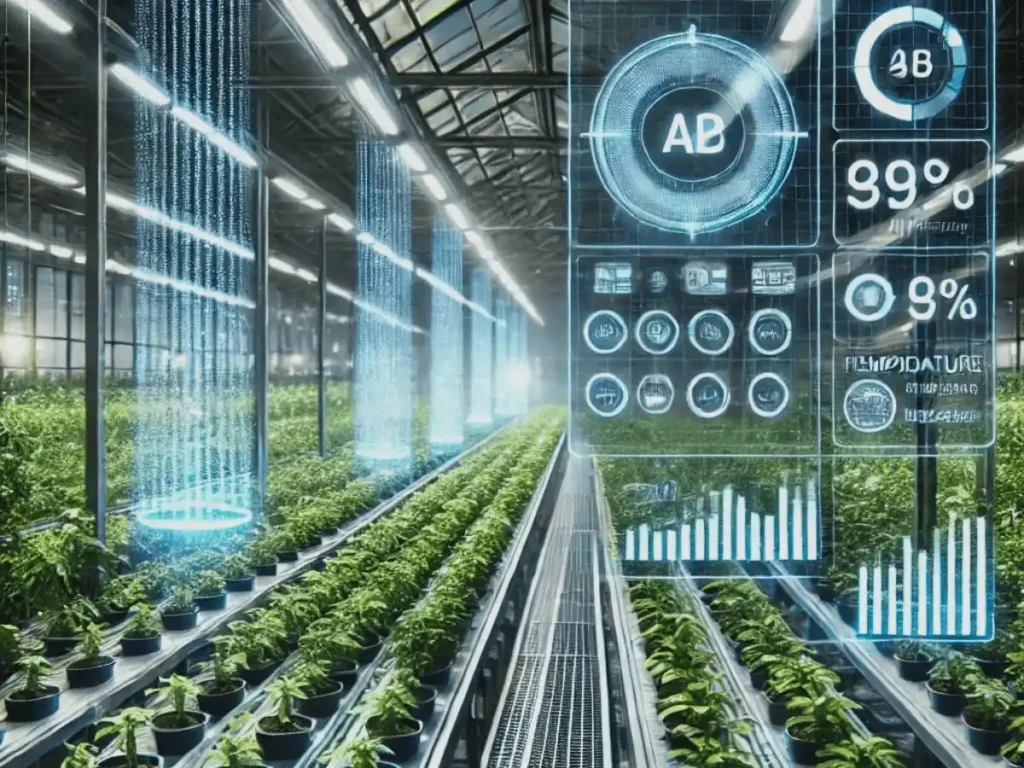
AI can help manage agricultural data in numerous ways:
1. Manage Risk
Farming errors are reduced using predictive analytics.
2. Plant Breeding
AI recommended crops that are more resistant to adverse weather, disease, and pests based on plant growth data.
3. Crop & Soil Health Analysis
AI systems can identify nutrient deficiencies in soil samples by analyzing their chemical composition. It can detect and predict agricultural illnesses. AI in irrigation can find ideal patterns, nutrient application schedules, and agronomic product mixes for crop feeding.
Moreover AI can improve crop production and forecast optimal harvesting times etc.
Why Partner with an AI software Development Company?
AI in agriculture creates many financial prospects for farmers and the industry. The technology requires thorough expertise and a well-crafted methodology. Transformation does not require solitude. AI Culture helps agribusinesses and AgTech companies build technological ecosystems. We use our diverse industry skills to improve our agricultural technology advisory and software development services and produce scalable customer-focused digital products alongside our clients.
Through idea validation, proof of concept, and market feedback, AI Culture makes innovation concrete. Data analytics, cloud services, AI automation technologies, and location intelligence ensure that AgTech products increase ROI, agricultural practices, and farmer lives.
Our extensive knowledge allows us to create personalized solutions that match your business’s particular needs. The AI Culture technology and subject expertise can help you construct unique farm management, indoor vertical farming, and precision agricultural aerial drone analytics systems. We produce livestock management, behavior monitoring, and health tracking technology for livestock production.
Ultimately
For sure the use of AI in businesses has shifted, in some instances, completely changed how they operate
When it comes to implementing AI into a business model, try thinking of solutions that are innovative and make traditional methods obsolete. With AI, we can devise means to tackle these problems which in turn translates value for the business and provides a competitive edge.
It Is also vital to choose the right AI Consulting Firm that can help you with the ideas you have. AI Culture accepts projects that involve the development so that you can take advantage of the capabilities that AI offers to your business.
